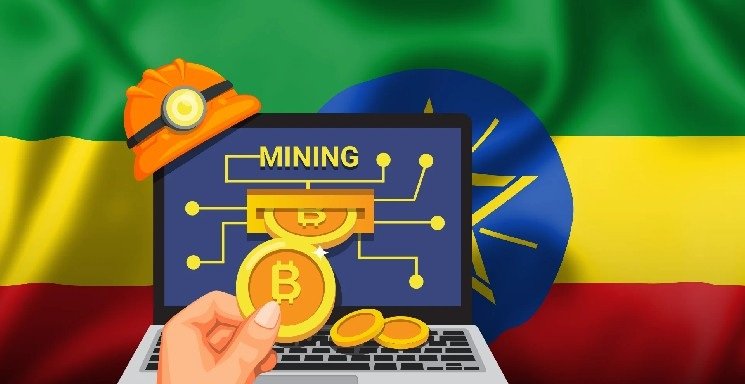Hashrate—the total computational power dedicated to mining Bitcoin—is more than a technical metric. It’s a measure of economic strength, energy strategy, political influence, and future-readiness. As Bitcoin grows, more countries are competing fiercely to host large portions of the global hashrate. Here’s why, what’s driving the competition, and how countries like Ethiopia are emerging as frontrunners.
What Drives the Hasrate Race
Several key factors motivate governments and private investors to pursue hashrate dominance:
- Economic Benefit & Revenue Streams
Mining generates direct revenue from electricity sales, mining profits, and associated infrastructure investments. For example, in Ethiopia, electricity providers have earned tens of millions of dollars from deals with miners. - Utilization of Renewable & Surplus Energy
Countries with rich renewable resources—hydropower, wind, solar—see mining as a useful way to monetize surplus electricity. When grids have excess capacity, mining imposes beneficial demand. Ethiopia, for example, is leveraging its hydropower capacity from the Grand Ethiopian Renaissance Dam and other sources to attract miners. - Job Creation, Industrial Growth & Infrastructure Development
Mining projects often involve large-scale infrastructures—power plants, high capacity transmission lines, cooling facilities—and thus create local employment and multiple downstream benefits. Governments interested in both technological advance and rural development view mining as a tool for economic diversification. - Geopolitical Strategy and Energy Policy
Controlling a share of global hashrate offers a kind of soft power—demonstrating technological self-reliance, influence in the cryptocurrency ecosystem, and energy policy leadership. Countries wish to avoid dependence on others for infrastructure or facing risky energy imports. Also, having a legal/regulatory framework attractive to miners secures investment and global recognition. - Sustainability, Clean Energy and ESG Trends
As pressure mounts globally to reduce carbon emissions, using renewable sources in mining bolsters environmental credentials. Mining based on green energy is increasingly seen favorably by investors, regulators and local governments. This gives nations with clean energy the chance to lead in both earnings and reputation. Ethiopia is a leading example—its hashrate growth is being driven by renewable energy.
Ethiopia as a Case Study
Ethiopia is one of the clearest modern examples of a nation rapidly entering the hashrate race:
- As of late 2024, Ethiopia’s Bitcoin mining operations contributed 2.5% of the global hashrate.
- The electricity cost in Ethiopia is very low (~US$0.032 per kWh), attractive to miners.
- The Ethiopian Electric Power Company (EEP) has already earned significant revenue (~USD $55 million) in recent months from mining-related electricity sales.
- Power capacity is growing: current consumption and planned expansions (600 MW now, rising toward 1 gigawatt) imply Ethiopia’s hashrate share could more than double in coming years.
These developments show how investment, regulatory clarity, and green energy resources combine to create strong competitive advantages in the hashrate landscape.
Implications & What Nations Must Do to Compete
For countries competing for hashrate, success depends on several strategic pillars:
| Strategic Area | Key Actions |
|---|---|
| Reliable & Affordable Energy | Harness renewables; build stable grids; ensure electricity is cheap and sustainable. |
| Regulatory Clarity & Mining Policy | Provide legal certainty, allow foreign investment, ensure clear tax / power contracts. |
| Infrastructure Capacity | Transmission lines, cooling, telecommunications/data connectivity, secure hosting facilities. |
| Support & Incentives | Incentivize miners with power discounts, tax breaks, fast licensing. |
| Environmental & Social Reputation | Use clean energy; ensure mining doesn’t harm local communities; offer transparency. |
Countries that manage these efficiently will attract large miners and hosting providers (like Bitmern) and capture more of the economic upside.
How Hosting Providers Like Bitmern Fit In
Hosting firms are essential enablers in this competition:
- They bring technical expertise, established infrastructure, efficient cooling, and top-tier mining equipment.
- They manage risks for miners—power stability, uptime, repairs—thus making investment in new regions more attractive.
- Providers that operate in Ethiopia & the USA (like Bitmern) are part of the competitive advantage of those nations, by demonstrating how to do mining profitably, sustainably, and at scale.
Final Thoughts
The race for hashrate domination isn’t just about blocks and earnings—it’s about nations staking claims in the future economy, energy infrastructure, and digital trust. Nations with low-cost clean energy, regulatory openness, and infrastructure readiness are pulling ahead—and Ethiopia is one of those.
For miners and investors, aligning with these winning geographies, partnering with experienced hosts, and using efficient hardware gives you a seat at the table.











